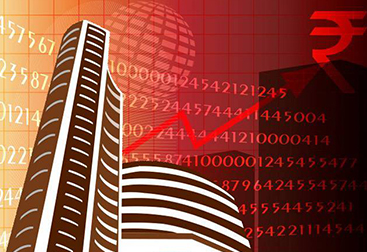Indian stock market exactly follows the US stock market. Really?

Is it possible to save money using credit cards? Is it significant?
July 1, 2021
Is it good to invest in US mutual funds?
July 1, 2021There are multiple indices, both in the US and in India, and while may seem to have had a similar overall movement (well, Covid-19 impacted markets globally and all markets reacted in a similar way), the rise and fall have been statistically different.
Even the various US indices have shown different kinds of movements which we must analyze.
DJIA, Nasdaq 100 and S&P 500 are the major indices in US while Sensex and NIFTY 50 constitute the 2 mostly regarded indices in India. So lets compare the US indices first.
- Dow Jones Index (DJIA)
- The Dow Jones Industrial Average, Dow Jones, or simply the Dow, is a stock market index that measures the stock performance of 30 large companies listed on stock exchanges in the United States.[1]
- In the last 1 year, the trading range of DJIA has been 18,213.65 – 29,568.57, the lowest being 38.40% below the peak.
- Also, current position of 26,469.89 is 10.47% below the peak.
- Also the chart below clearly shows that the DJIA index has not yet beaten the peak it achieved in February.
- NASDAQ
- The NASDAQ Composite is a stock market index of the common stocks and similar securities listed on the Nasdaq stock market. Along with the Dow Jones Industrial Average and S&P 500 it is one of the three most-followed indices in US stock markets[2] .
- In the last 1 year, the trading range of NASDAQ Composite has been 6,631.42 – 10,839.93, the lowest being 38.80% below the peak (similar to the DJIA number). However, if we consider the high before the fall, it was 9,817.18 and hence the fall is only 32.45% from the peak.
- Also, the current position of 10,363.18 is 5.56% higher than the Feb peak.
- Here, the chart shows that the NASDAQ index did beat the peak it achieved in February and is also currently trading higher than those numbers
- This is a clearly different statistical movement than DJIA
- S&P 500
- The S&P 500, or simply the S&P, is a stock market index that measures the stock performance of 500 large companies listed on stock exchanges in the United States. It is one of the most commonly followed equity indices, and many consider it to be one of the best representations of the U.S. stock market[3] .
- In the last 1 year, the trading range of this index has been 2,191.86 – 3,393.52, the lowest being 35.40% below the peak.
- The current position of 3,215.63 is only 5.24% lower than the peak.
- Here, the chart shows that the S&P 500 index has not beaten the peak it achieved in February.
- So, while S&P 500 has not beaten the peak yet (similar to DJIA), it is only 5% lower than the 52Wk high (similar to NASDAQ composite index).
Not Lets compare the Indian indices and how they look:
- BSE SENSEX:
- The BSE SENSEX is a free-float market-weighted stock market index of 30 well-established and financially sound companies listed on Bombay Stock Exchange. The 30 component companies which are some of the largest and most actively traded stocks, are representative of various industrial sectors of the Indian economy[4].
- In the last 1 year, the trading range of this index has been 25,638.9 – 42,273.87, the lowest being 39.35% below the peak.
- However, Sensex achieved the peak in Jan 2020, while DJIA and S&P 500 achieved their respective peaks in Feb 2020.
- So is it Sensex replicating US markets or vice versa?
- The current position of 38,128.90 is almost 9.80% lower than the peak.
- If we look at the data from a few days ago, BSE Sensex was almost 15%+ down from the peak while the US markets had recovered significantly in Jun 2020 itself.
- Also, BSE Sensex has not yet beaten the peak it achieved in Jan 2020.
- NIFTY 50:
- The NIFTY 50 is a benchmark Indian stock market index that represents the weighted average of 50 of the largest Indian companies listed on the National Stock Exchange[5].
- In the last 1 year, the trading range of this index has been 7,511.10 – 12,430.50, the lowest being 39.57% below the peak (similar to Sensex).
- However, NIFTY 50 also achieved the peak in Jan 2020, while DJIA and S&P 500 achieved their respective peaks in Feb 2020 while NASDAQ achieved it in Jun 2020.
- So is it NIFTY 50 (similar to Sensex) replicating US markets or vice versa?
- The current position of 11,194.15 is almost 10% lower than the peak. Again, this has a lot to do with the recent recovery while the US markets had recovered significantly in Jun 2020 itself.
- Also, NIFTY 50 has not yet beaten the peak it achieved in Jan 2020.
Suggestion:
- It is unwise to compare or say that the markets of a country are exactly following another market.
- There are bound to be correlations but to a limited extent.
- The reason is the trade and commerce, exports and imports between countries as well as the global impacts of situations like Covid-19 etc. connect across the borders.
- As was shown above, even the indices of same country may behave differently, simply because of their compositions (NASDAQ is dominated by technology companies, DJIA works on weights and S&P 500 has all companies).
Hope this solves the doubt that while Indian markets have correlations with the global leader US, they do not exactly follow each other !!




